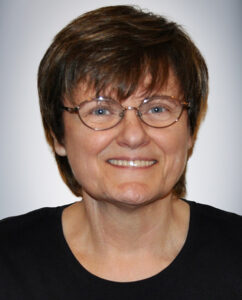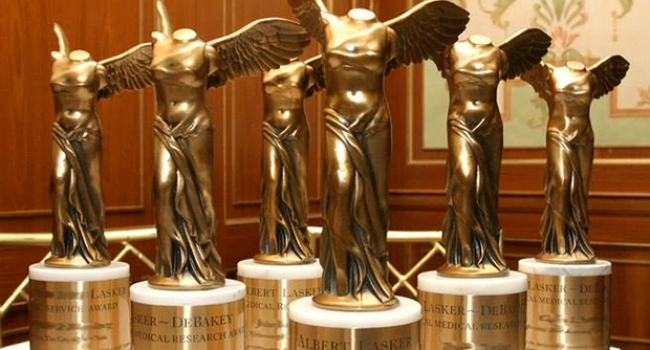It came as a surprise to no one last Friday, when the two scientists who developed the mRNA technology that sits at the center of two successful COVID-19 vaccines, were awarded the 2021 Lasker Award. Since 1945, the Lasker Awards have recognized the contributions of scientists and physicians who have made major advances in the understanding, diagnosis, treatment, cure, and prevention of disease. The last time that the Lasker Awards were given was 2019; they were not given last year due to the COVID-19 pandemic.
The 2021 Lasker-DeBakey Clinical Award was awarded to Katalin Karikó, PhD, senior vice president at BioNTech RNA Pharmaceuticals, and Drew Weissman, MD, PhD, professor in vaccine research at the Perelman School of Medicine at the University of Pennsylvania. The pair’s decades of research, and teamwork, pioneered the mRNA technology that led to the COVID-19 vaccines developed by Moderna and BioNTech/Pfizer.
Although translational applications of mRNA technology are in their infancy, Karikó realized the potential for mRNA as a therapeutic decades ago. She started working on RNA in 1978, during her graduate work. The hurdles that needed clearing to bring the unstable molecule to its therapeutic potential were overcome because of Karikó and Weismann’s work. They worked together, modifying the RNA, so that it could be delivered and used by human cells without being recognized by the immune system of the body. Their decades of work meant that the COVID-19 vaccines could be developed at breakneck speed when the pandemic started.

In her acceptance speech, Karikó said that she has reflected on her humble beginnings and the long, winding road of her career. She mentions a book from her days as a high school student that instilled in her the adoption of an attitude that allows for the conversion of negative stress into something positive. When met with failure during her career, she used this philosophy as a guide and worked harder, increased her creativity, and performed better. She tries, she said, to focus on things she can do and she doesn’t lose time on things she cannot.
Never in a million years, she said, did she think her work would be used to create a vaccine to combat a global pandemic. Speaking to the young girls who may be inspired by her story and want to become a scientist, she says, “stay curious, adopt the right attitude, and stay on track, no matter how long and winding that road may be.”
Weissman and Karikó have had a long-standing partnership. Weissman noted that they would often email into the early hours of the night—unable to wait to share data or ideas. He is “truly grateful,” he said, that his work has helped the world but that it is far from over. His lab is designing new vaccines—including a pan-coronavirus vaccine designed to protect against all viruses in the coronavirus family. He is also working to increase the global supply of the COVID-19 vaccine.
The Lasker Awards are given in three categories: basic research, clinical research, and special achievement. The Lasker-Koshland Special Achievement Award honors research accomplishments and scientific statesmanship that engender the deepest feelings of awe and respect. This year, that honor was given to David Baltimore, PhD, professor emeritus at the California Institute of Technology. Baltimore won the Nobel Prize in Physiology or Medicine in 1975 for the discovery of reverse transcriptase—the enzyme found in retroviruses that converts RNA to DNA.
The Albert Lasker Basic Award, given for a fundamental discovery that opens up a new area of biomedical science, was awarded this year to a team of three researchers for their work in developing the field of optogenetics, including the early discovery that launched the field—that of light-sensitive microbial proteins that can activate or silence individual brain cells.
The 2021 winners are Peter Hegemann, PhD, professor of biophysics at Humboldt University of Berlin, Germany; Dieter Oesterhelt, PhD, emeritus director at the Max Planck Institute of Biochemistry; and Karl Deisseroth, PhD, professor of bioengineering and of psychiatry and behavioral sciences at Stanford University.
Oesterhelt’s discovery, made in the 1970s, launched the work being celebrated today. It started with the discovery of a light-activated proton pump in archea—a protein known to exist, to that point, only in the visual systems of higher organisms. Two of these light-gated ion channels, channelrhodopsin-1 and 2, were identified by Hegemann, who did his PhD work in the Oesterhelt lab at Max-Planck Institute of Biochemistry. Hegemann’s lab then went on to use the proteins in animal cells. Deisseroth took these molecular tools and moved them into neurons. When moved into the brains of living mice, the behavior could be induced by switching light on and off. Now, the field of optogenetics is uncovering cellular pathways and neural circuitry.
In his acceptance speech, Deisseroth said that they are working to illuminate the mysteries of emotion, in health, and psychiatric disease. He noted that the COVID-19 pandemic has generated a greater urgency for an understanding of psychiatry. Using optogenetics, his lab has developed an approach for mapping individual features of adaptive and maladaptive brain states onto causal and precisely defined elements of neural circuitry.
Hegemann said that the work was often “painstaking,” but they found joy working in unexplored territories to bring discoveries about tiny proteins, found in bacteria and algae, to unexpected applications. He looks forward to watching the clinical applications of optogenetics.
Will these awards—sometimes informally referred to as “America’s Nobels”—be a prediction of this year’s Nobel Prize? The answer will come in few weeks when the Norwegian Nobel Committee makes their famous, early-morning, phone call.



